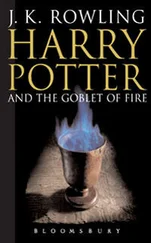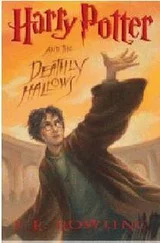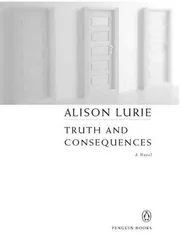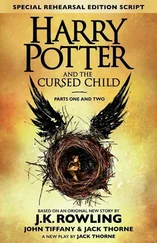Somehow, as he talked, the world got right again to Jo; the old beliefs, that had lasted so long, seemed better than the new; God was not a blind force, and immortality was not a pretty fable, but a blessed fact. She . . . wanted to clap her hands and thank him. 5
Louisa May Alcott solved the problem of her peculiar and unconventional father by largely removing him from Little Women . When part 1 begins, Mr. March is working at an army hospital in Washington, something Louisa herself (but not Bronson Alcott) actually did. He does not return until almost the last chapter. In part 2 he is almost as absent: “a quiet, studious man,” 6who appears only now and then to make moral observations and criticize Jo’s moneymaking sensational tales, while accepting the money they earn.
Though Bronson Alcott was unable to attract many followers or make Fruitlands a success, his daughter gave his educational and social theories wide circulation in her books. But she presented these then very radical ideas with such skill and charm that most of her readers did not protest. In Little Women , for instance, the girls read the New Testament and model their lives on Pilgrim’s Progress , but do not go to church. Like the Alcott family, they never touch alcohol.
The Marches also practice charity in a hands-on way. Instead of withdrawing uneasily from the rush of German immigrants (thousands of whom flooded into America in the 1860s and 1870s), they take on the Hummel family and its seven children as a personal responsibility. Later, with the approval of her parents, Jo marries a middle-aged and penniless German with a strong accent. To understand this in contemporary terms, one must imagine the reaction of a New England WASP family whose twenty-five-year-old daughter has just announced her engagement to an unemployed Central American refugee in his forties, with two orphan nephews to support.
Alcott also conventionalized her mother and sisters to some degree. Meg, like Anna, ends up as a housewife and the mother of twins; and Beth, like Elizabeth, dies young. But Abba Alcott, who once rebelled against her husband by walking out of his commune and taking her daughters with her, becomes Marmee, a model of the patient and dutiful wife. Jo and Amy (May) were given less independence and more romantic destinies than their originals. Amy marries Laurie when she is twenty-one, and gives up art as a career because “talent isn’t genius.” 7In reality May Alcott did not marry until she was over forty, after many years as a professional artist. Louisa never married, but Jo gets an unconventional but likable husband who, as Sarah Elbert says in A Hunger for Home , “has all the qualities Bronson Alcott lacked: warmth, intimacy, and a tender capacity for expressing his affection.” 8He also does the shopping and shares child care.
From a mid-nineteenth-century perspective Little Women is both a conservative and a radical novel. Some aspects of it, and some characters, represent the past; others look to the future. Like much earlier juvenile literature, it is often sentimental, full of moral lessons, and centers on a self-contained family unit that tends to exclude outsiders. The March girls, unlike teenagers today, apparently have no close friends, and neither does Marmee. When Laurie appears, he is accepted as an adopted brother. But in an age of patriarchal Victorian families, the Marches are a matriarchy. Mr. March remains a background figure even when he is on the scene; it is Marmee to whom the girls go with their troubles, and it is she who comforts and advises them, and is the central force in the household, as is clear from the picture of the four girls grouped around her that appears in most editions—and in the advertisement for the latest film version.
In an innovation that was widely copied later, Louisa May Alcott replaced the single central character of the standard juvenile with four heroines, each with a different personality. Before Little Women there was one ideal type of girlhood in most American juvenile literature: modest, dutiful, and obedient. Alcott suggested that there was a range of possibilities, and also that a heroine could have serious faults—vanity, jealousy, sloth, or anger—and still earn a happy ending. 9Moreover, through her four heroines she was able to represent and comment on four important contemporary views of womanhood.
Beth is the typical early Victorian girl-child: sweet, shy, passive, and domestic—the traditional “angel in the house.” At thirteen she still plays with dolls. Her life is centered in the family, and her dearest wish for the future is “to stay at home safe with Father and Mother.” 10Unlike the other girls, she does not work outside the home, and seems almost never to leave it. Her death, like that of Dickens’s Little Nell and many other children in nineteenth-century popular fiction, suggests that innocence and virtue are innately fragile and fleeting, unable to survive in the real world. Historically speaking, Beth represents a view of womanhood that was literally passing away at the time. The hidden message to the reader is that to stay at home safe with your parents is to die.
Meg, on the other hand, is a woman of the mid-nineteenth century: an exemplar of what at the time was called the Domestic Movement. Little Women begins during the first winter of the Civil War, which removed men from the home and gave middle-class women like Marmee and her daughters more power and responsibility. After the war ended, many writers encouraged women to keep what they had won: to take charge of their homes and children rather than cede control to servants and male authority. That this was in many ways a new idea is clear from the episode in which the four girls try living for a week without household help, and it turns out that none of them, not even the domestic Beth, know how to cook—something that would be considered most peculiar today. Meg goes into marriage without many domestic skills, but by the end of the novel she is fully in control of her own household. If you marry and have children, the book suggests, make sure you are in charge of your own life.
Amy, the youngest Little Woman, appropriately embodies one of the newest developments in American society: the entry of women into the arts. She belongs to the generation of painters like Mary Cassatt (1845–1926) who went to Europe to study art just as their brothers had been doing for years. Amy’s talent is recognized early, and though she doesn’t become a professional artist, she continues to paint and sculpt, and there is no suggestion that her efforts are frivolous. Implicitly, her career suggests to the reader that if you wish “to be an artist and go to Rome,” it may happen.
After her marriage to Laurie, Amy travels in Europe and together with her husband brings back artistic treasures and helps struggling artists of both sexes. She thus also stands for the many well-to-do late-nineteenth-century women like Isabella Stewart Gardner (1840–1924), May Alcott’s near-contemporary, who became important collectors and patrons of the arts.
Jo, of course, represents the feminist movement; in the phrase of the period, she is a New Woman, who chooses a career. Jo is also the first and the most famous positive example in fiction of a new kind of girl: the tomboy. In chapter 1 of the book she declares, “I like boys’ games and work and manners! I can’t get over my disappointment in not being a boy.” 11She hates her given name of Josephine, and, as some readers have pointed out, has a nickname that might easily belong to a boy, while her friend and neighbor Theodore Laurence is known by the girlish name of Laurie. All through the book her friends and relatives keep trying to suppress the boyish side of Jo, but they never totally succeed, and at the end she is still romping about, careless of her clothes, and talking boys’ slang, although she is married and a mother.
Читать дальше











